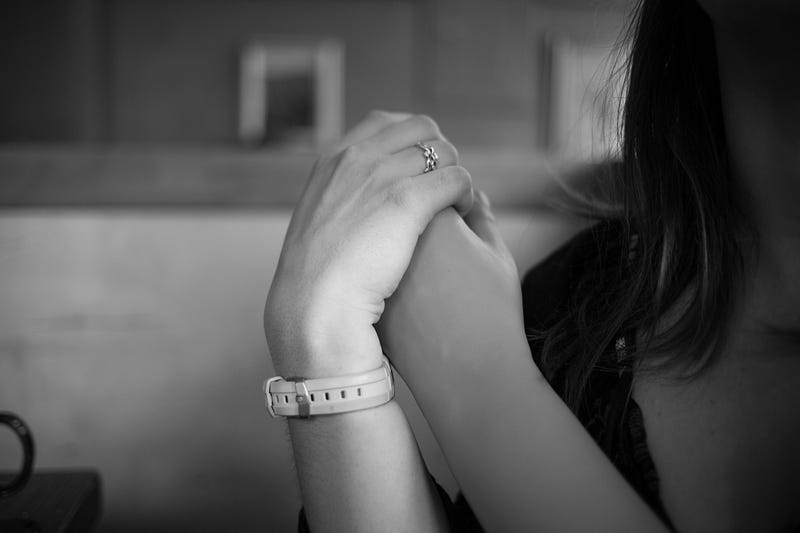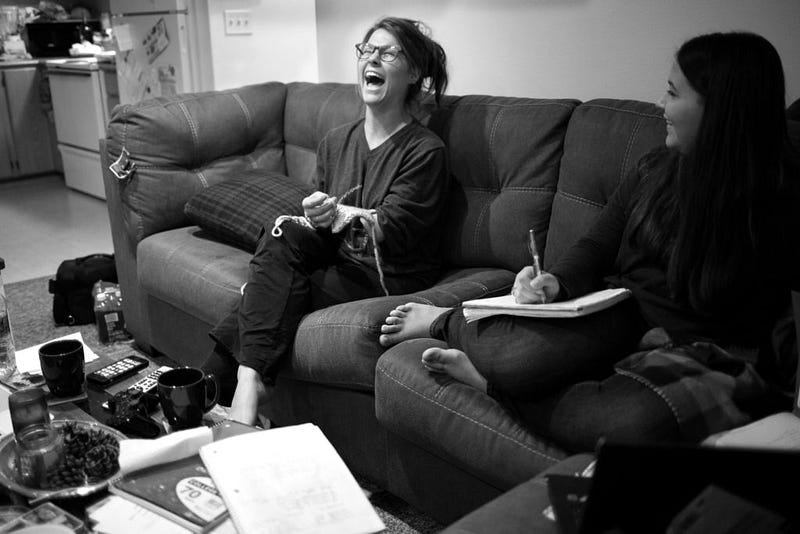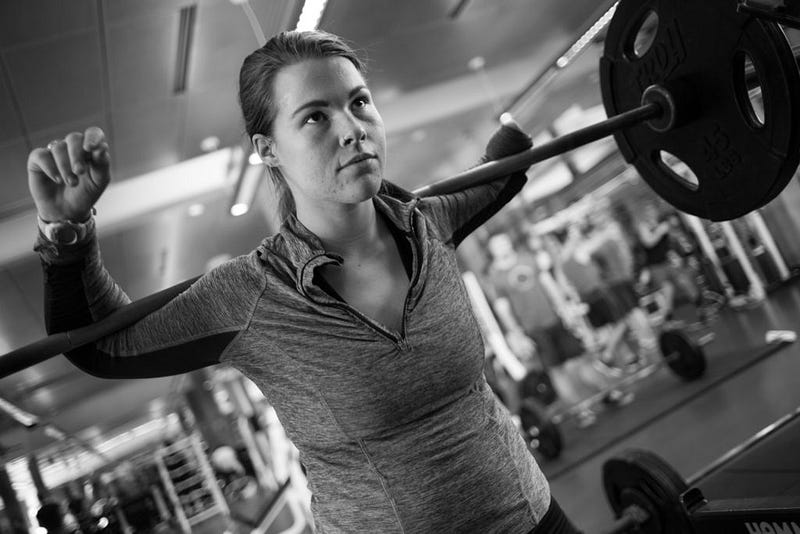Just Grace

The story of a witty, multi-talented young woman who just so happens to have one arm
Written by Hayley Elkin // Photos by Kjell Redal
She sat amused, one arm slung over the back of her chair, smiling as I tried to come up with something she finds even a little bit difficult to do with one arm.
Typing? Easy. Makeup? Easy. Video games, archery, volleyball, opening a jar? Easy. Tying her shoes? She can do it five different ways. I thought I had finally stumped her when I asked about doing her hair.
Proving a point, she reached up and took her red hair down from the ponytail it was in and then twisted each side back into a neat bun better than I can do with two hands.
“This right here is why I’m so lucky to have a stub,” she says, holding her hair back with what’s left of her left arm as she pins it into place with her right hand. “Without a stub this whole thing would suck a lot more.”
Grace Eliason is a 20-year-old amputee from a farm in the small town of Yutan, Nebraska, who is very particular about calling the remainder of her left arm a stub, not a nub.
She lost her arm on June 3, 1999, when she was two years old. She was in the throes of her terrible twos and was the most rambunctious kid on the farm.
Grace was riding in a wagon hooked up to the back of a John Deere riding lawn mower as her mom rode through the farm. Grace somehow managed to crawl up onto the mower and fall off, it ran over her left arm. It was from this point on that she remembers the day’s events.
She remembers being wrapped in a purple, green and black towel, waiting in the farmhouse kitchen for the ambulance to arrive. She remembers being taken to the local high school where a helicopter was waiting to take her to the hospital. The last thing she remembers is a needle going into her arm when she arrived in the emergency room.
She woke up in the hospital, where she spent about a week recovering after her amputation. From there, it was a long healing process. One thing she’s glad she doesn’t remember is the pain.
“After that point, I changed absolutely nothing about myself,” Grace says. “I was still an awful child, climbing everything. I was very defiant and having one arm didn’t really slow me down.”
Having one arm may not have slowed Grace down, but it did come with a few changes — one of which was getting a prosthetic, the first of many arms Grace would have in her life.
Appointments would go on for over six hours. Impatient and always-moving, Grace would have to sit still, training the nerves in her arms so that she could control the mechanics of her prosthetics. In the end, she never found a use for them. The way she sees it, you don’t need two arms to live.
“Grace never really took to her prosthetics,” Beth Eliason, Grace’s mom says. “When she’d get tired of it in school, she’d just set it down somewhere. We were always asking, ‘Grace, where’s your arm?’”
She once buried her arm, an arm that can cost anywhere from $10,000 to $20,000, in the sand box because she was tired of wearing it.
Along with growing out of her clothes like most kids, Grace would also outgrow her arms. Back to another appointment she’d go, to sit for hours while they tailored new arms to fit her unique amputation.
“There was never really anything tough about parenting her, she just made it so easy,” Beth says. “Except maybe the prosthetics. She’s very… strong-willed.”
Grace hated wearing arms then, and she hates wearing arms now. She keeps one cosmetic arm on hand, but almost never wears it.
Back at Grace’s home in Nebraska, her mom has a cabinet in the laundry room affectionately titled, “The Arm Closet.” In it lies a pile of arms that Grace has outgrown over the years.
“You know when you’re away at college and your mother calls you and she’s like, ‘I think I’m going to make your room into a gym?’” Grace asks. “Well, my mom calls me and she’s like, ‘I don’t know what to do with all of your creepy arms.”’
Grace calls little anecdotes like this one “arm stories.” She takes her phone out to show me, “Ways to Lose a Hand,” a long list of stories having to do with her arm. These stories range from the time she and her one-armed friend shared the price of one manicure to her favorite Easter story.
“You know the Catholic stand-sit-kneel, the hey Macarena?” Grace asks. “It was the middle of Mass on Easter Sunday and we were all praying. I was being a little brat, as I often was, and I ripped off my arm and just set it down.”
She goes on to mimic the sound of her mechanical arm being set down on the pew in the middle of an otherwise silent church and recalls her entire family bursting into laughter.
Stories like this, Grace says, are why she loves family get-togethers. She gets to hear all of the funny situations her arm, or lack thereof, got her into as a child.
Growing up, Grace was involved in just about every activity you can imagine. Golf, clog dancing, softball, theater, marching band, basketball, swimming — the list goes on. You name it, Grace probably did it and she was probably pretty good at it.
“I love doing two-arm things,” she says. “I feel very capable of everything I do, a lot of times more capable than my two-armed counterparts.”
Grace is competitive and says naturally, sometimes people underestimate her. She doesn’t mind because she enjoys the challenge and takes pride in proving them wrong.
Since starting college, Grace has taken an interest in weight lifting. Her boyfriend was the first person to convince her to give it a try, despite some obvious obstacles she might face.
“That’s the kind of person I like,” Grace says. “When they’re like, ‘Let’s go do this, we’re not going to even question how yet. We’re just going to go do it and figure it out along the way.”’
There was a bit of a learning curve at first with weight lifting. She’d try several different approaches for each exercise before she figured out which was most comfortable and worked out the correct muscles. But once she did, she excelled and now spends many of her mornings at the gym. She loves the cable machines and can now squat 185 pounds.
“The first time I went into the weight room, I wasn’t intimidated as an amputee,” Grace says. “I was intimidated as a human being. Now, I strut around like I own the place.”
Grace’s confidence is unmistakable — be that with weight lifting or anything else she does, she exudes it. She says nearly everything about losing her arm at age 2 has positively impacted her life. However, she could come up with a few minor frustrations, one being phantom limb.
Phantom limb occurs commonly among amputees and happen when sensations, usually pain, are felt in the limb that has been removed. Grace figured out how to relieve the pain pretty quickly.
“Are you ready? Watch this,” she says as she animatedly wiggles the fingers on her right hand. Her amputated arm started to twitch and move. “So whenever something feels really tight over here, I just start to move what isn’t actually there.”
This, Grace says, is the key to getting rid of phantom pain: just moving a limb that doesn’t exist. All the nerves have been moved around, as Grace explains it, so some of the nerves that would typically be further down her arm are up in her stub instead.
Not surprisingly, the other setback Grace has experienced as a result of her amputation has been a few instances of discrimination, like the time she had to move from the emergency exit
“First of all, I was offended because it’s a stub, not a nub,” Grace says mockingly.
That’s how Grace seems to take most things. In perfect stride and usually with a good laugh. She likes to lift her arm up right away and make people feel a little uncomfortable so that they can move past it and on to making jokes about getting a lawn mower tattooed along her scar.
“When people come up to me and say, ‘You are so inspirational,’ in my head, I just laugh,” Grace says. “I am very appreciative to people who think that, but I’m just kind of living my life and I’m really enjoying it. If that happens to be an inspiration to someone, then that’s great.”
A million times over, Grace will tell you how lucky she is. Lucky that she was so young when it happened to her, lucky she doesn’t remember the pain, lucky to have a supportive family, lucky to be able to afford the medical care she needed, lucky it was just an arm. Because at the end of the day that’s all it is — just an arm.
“I don’t identify as anything. By definition I guess I do have a disability,” Grace says. “But I just identify as Grace.”


